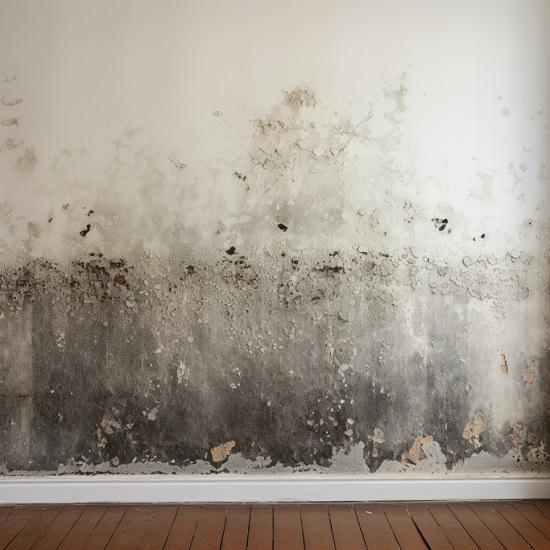Comprehensive Post Mold Remediation Procedures
Specialist Tips for Post Mold And Mildew Remediation Success
In the world of mold and mildew remediation, effectively getting rid of mold is only half the battle; the true obstacle lies in preventing its reappearance. By sticking to skilled pointers and finest methods, people can protect their rooms against mold and mildew rebirth and keep a healthy and balanced indoor environment.
Screen Humidity Levels On A Regular Basis
After finishing mold remediation treatments, maintaining ideal moisture levels is vital to avoid mold re-growth and ensure a healthy and balanced interior environment. High moisture degrees above 60% create a conducive atmosphere for mold to thrive, making routine checking a proactive action to avoid any type of future mold and mildew concerns.
Making use of hygrometers or wetness meters can aid in accurately gauging humidity degrees in various locations of the building. These tools provide real-time information that enables removal professionals to make enlightened decisions relating to air flow, dehumidification, and various other needed actions to keep ideal humidity levels post-remediation. Additionally, establishing a routine schedule for humidity checks, particularly in high-risk locations such as bathrooms, kitchens, and cellars, is a positive method to mold avoidance. By consistently keeping track of humidity levels, homeowner can effectively minimize the risk of mold and mildew reoccurrence and keep a healthy interior atmosphere post-remediation.
Conduct Thorough Inspections Post-Remediation
Complying with the conclusion of mold and mildew remediation procedures, it is crucial to carry out comprehensive examinations to validate the effectiveness of the remediation procedure. These post-remediation evaluations are critical in making sure that the mold concern has been effectively addressed which there is no reoccurrence or continuing to be mold growth. Evaluations need to be performed by qualified specialists who have experience in determining mold and assessing interior air quality.
During these inspections, various techniques such as visual analyses, air tasting, and surface area tasting might be utilized to extensively evaluate the remediated locations. Visual assessments entail an in-depth evaluation of the facilities to inspect for any kind of noticeable indicators of mold and mildew development or water damage. Air tasting helps in determining the air-borne mold spore levels, while surface sampling can discover mold fragments on surface areas.
Implement Proper Ventilation Strategies
After making sure the efficiency of the mold removal process via extensive inspections, the following vital step is to concentrate on applying proper ventilation approaches. Ample ventilation is vital in stopping mold reoccurrence by controlling dampness degrees and promoting air circulation. To attain this, it is advised to utilize exhaust fans in locations susceptible to high moisture, such as kitchens and shower rooms. Furthermore, opening doors and home windows when climate permits can aid enhance airflow and lower wetness build-up. Air purifiers and dehumidifiers are likewise useful tools in maintaining ideal indoor air top quality.
Proper air flow not just help in stopping mold growth but also adds to the overall health and comfort of occupants. By guaranteeing sufficient ventilation throughout the building, you can minimize the danger of mold regrowth and develop a much healthier living setting.

Use Mold-Resistant Products for Fixes
To boost the long-lasting effectiveness of mold and mildew removal efforts, integrating mold-resistant products for repairs is essential in reducing the threat of future mold development. Mold-resistant products are developed to withstand moisture and inhibit mold and mildew development, making them a crucial selection for areas prone to wetness and humidity. When fixing areas influenced by mold, using products such as mold-resistant drywall, mold-resistant paints, and mold-resistant caulking can help protect against mold recurrence.
Mold-resistant drywall is an exceptional option to traditional drywall in locations like cellars and restrooms where moisture degrees are greater. This kind of drywall has a special finish that withstands mold and mildew growth also when revealed to damp problems. Furthermore, utilizing mold-resistant paints having antimicrobial representatives can further prevent mold growth on ceilings and wall surfaces.
In areas where moisture is common, such as bathroom and kitchens, using mold-resistant caulking discover this around sinks, bathtubs, and windows can assist seal out water and avoid mold from holding in splits and holes. By purchasing these mold-resistant products during repairs post-remediation, you can dramatically reduce the possibility of future mold concerns and preserve a healthier interior setting.
Maintain Tidiness and Address Water Issues
After mold removal, it is crucial to preserve a clean atmosphere to stop the regrowth of mold and mildew. Leaks, water invasion, or high moisture levels can create the ideal breeding ground for mold and mildew, so it is critical to take care of any kind of water-related issues quickly.
To keep tidiness, think about making use of HEPA filters in vacuums and air purifiers to catch mold and mildew spores and stop their circulation in the air. Guaranteeing correct air flow in locations vulnerable to moisture build-up, such as cooking areas and bathrooms, can help keep moisture levels in check. By remaining vigilant about tidiness and resolving water problems immediately, you can efficiently avoid mold reinfestation and maintain a healthy interior setting.
Verdict

In the world of mold and mildew remediation, effectively eradicating mold is only half the fight; the true difficulty lies in avoiding its reappearance. After look at here now completing mold remediation treatments, keeping optimal humidity levels is crucial to prevent mold re-growth and make sure a healthy and balanced interior environment. High humidity levels above 60% create a favorable atmosphere for mold to prosper, making routine keeping track of a positive procedure to stop any type of future mold and mildew concerns.
To get more boost the lasting performance of mold removal efforts, including mold-resistant materials for repair services is crucial in minimizing the risk of future mold growth. After mold and mildew remediation, it is important to maintain a clean environment to prevent the regrowth of mold and mildew.